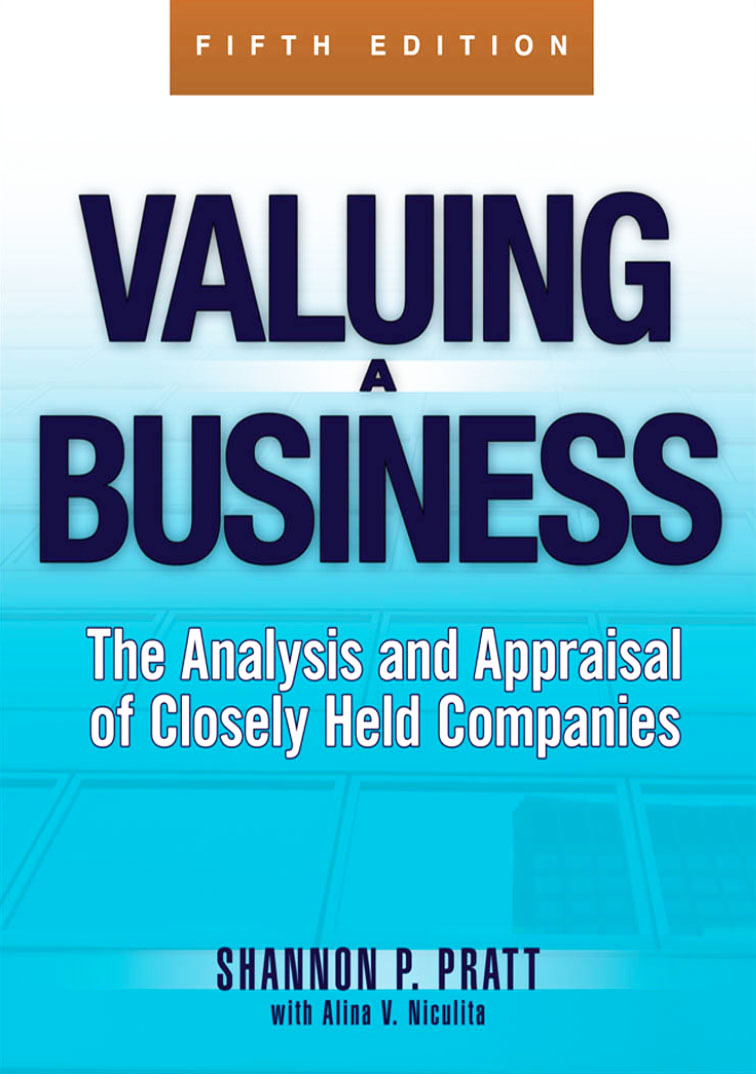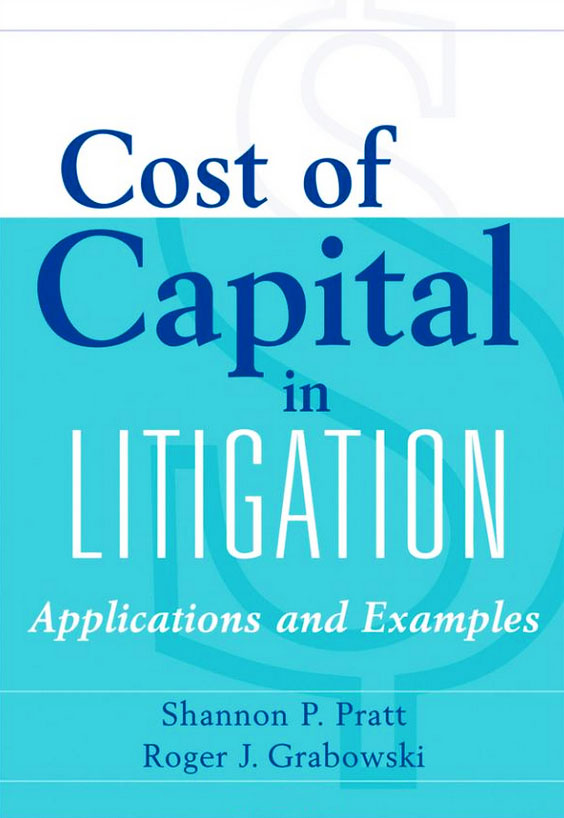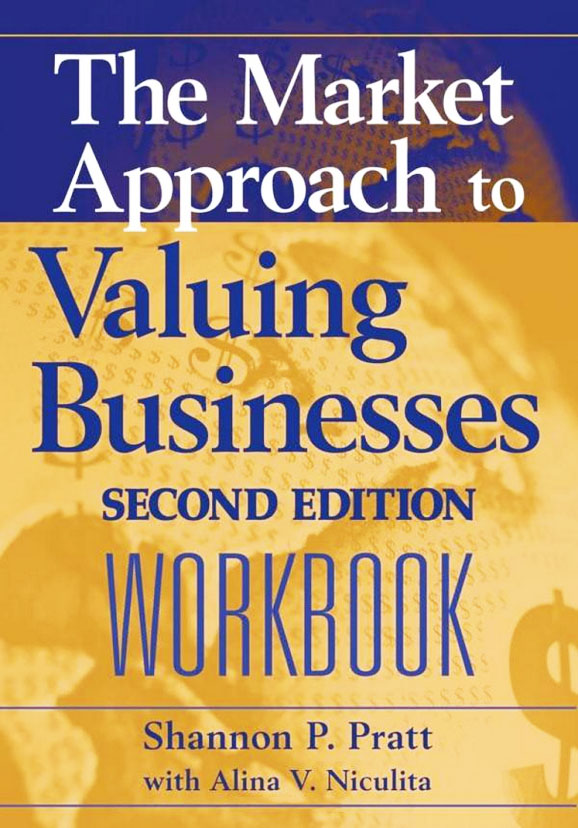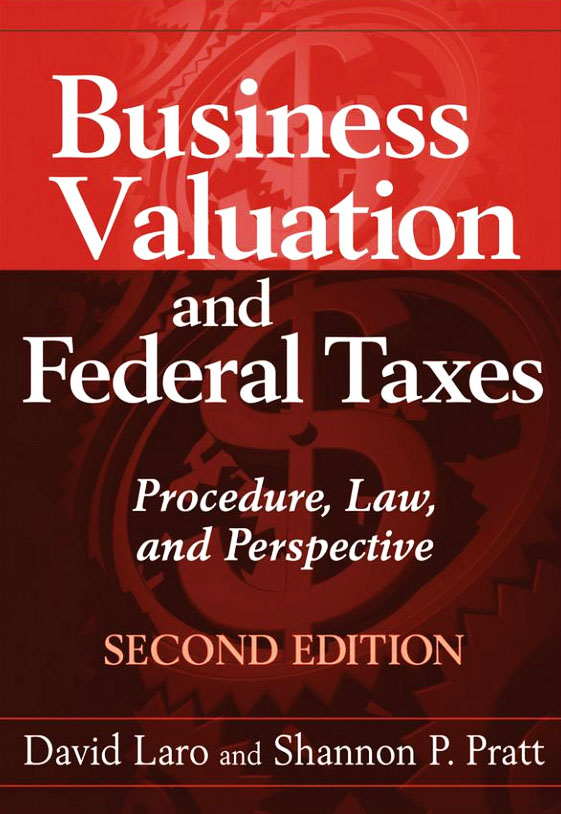Business Valuation Body of Knowledge, Second Edition
Table of Contents
Preface xiii
Acknowledgments xv
Basic Formulas xvii
Section 1 Questions 1
Acknowledgments xv
Basic Formulas xvii
Section 1 Questions 1
- Part I. Business Valuation Engagement Environment 1
- Part II. Terminology and Notation 13
- Part III. Valuation Approaches and Methods 19
- Part IV. Analysis of the Company 57
- Part V. Supporting Data 69
- Part VI. Valuations for Specific Purposes 75
- Preface xiii
- Acknowledgments xv
- Basic Formulas xvii
Section 1 Questions 1
Part I. Business Valuation Engagement Environment 1
- 1. Business Valuation Legal and Regulatory Environment 3
- 2. Business Valuation Professional Environment 5
- 3. Business Valuation Engagement 8
- 4. Litigation Service Engagements 11
Part II. Terminology and Notation 13
- 5. International Glossary of Business Valuation Terms 15
- 6. Notation System Used in This Book 17
Part III. Valuation Approaches and Methods 19
- 7. Overview of Valuation Approaches and Methods 21
- 8. Income Approach: Cost of Capital 23
- 9. Income Approach: Discounting Method 30
- 10. Income Approach: Capitalization Method 34
- 11. Market Approach: Guideline Public Company Method 38
- 12. Market Approach: Guideline Merger and Acquisition Method 41
- 13. Prior Transactions, Offers, and Buy-Sell Agreements 45
- 14. Adjusted Net Asset Method 47
- 15. Excess Earnings Method 49
- 16. Discounts and Premiums 51
- 17. Reconciliation and Value Conclusion 55
Part IV. Analysis of the Company 57
- 18. Financial Statement Analysis 59
- 19. Using Economic and Industry Data 64
- 20. Site Visits and Interviews 67
Part V. Supporting Data 69
- 21. Sources of Supporting Data 71
Part VI. Valuations for Specific Purposes 75
- 22. Tax-Related Valuations 77
- 23. Employee Stock Ownership Plans 79
- 24. Shareholder Buyouts and Disputes 82
- 25. Marital Dissolutions 85
Section 2 Answers 87
Part I. Business Valuation Engagement Environment 87
- 1. Business Valuation Legal and Regulatory Environment 89
- 2. Business Valuation Professional Environment 90
- 3. Business Valuation Engagement 91
- 4. Litigation Service Engagements 93
Part II. Terminology and Notation 95
- 5. International Glossary of Business Valuation Terms 97
- 6. Notation System Used in This Book 98
Part III. Valuation Approaches and Methods 99
- 7. Overview of Valuation Approaches and Methods 101
- 8. Income Approach: Cost of Capital 102
- 9. Income Approach: Discounting Method 105
- 10. Income Approach: Capitalization Method 108
- 11. Market Approach: Guideline Public Company Method 111
- 12. Market Approach: Guideline Merger and Acquisition Method 112
- 13. Prior Transactions, Offers, and Buy-Sell Agreements 113
- 14. Adjusted Net Asset Method 114
- 15. Excess Earnings Method 115
- 16. Discounts and Premiums 117
- 17. Reconciliation and Value Conclusion 119
Part IV. Analysis of the Company 121
- 18. Financial Statement Analysis 123
- 19. Using Economic and Industry Data 125
- 20. Site Visits and Interviews 126
Part V. Supporting Data 127
- 21. Sources of Supporting Data 129
Part VI. Valuations for Specific Purposes 131
- 22. Tax-related Valuations 133
- 23. Employee Stock Ownership Plans 134
- 24. Shareholder Buyouts and Disputes 135
- 25. Marital Dissolutions 136
- CPE Self-Study Examination 137
- Index 153

Valuing a Business: The Analysis and Appraisal of Closely Held Companies, 5th Edition

Cost of Capital, 5th Edition

The Lawyer’s Guide to The Cost of Capital

Cost of Capital in Litigation

Standards of Value: Theory and Applications

The Best of Shannon Pratt

PPC's Guide to Business Valuations

Valuing Small Businesses and Professional Practices, 3rd Edition

The Market Approach to Valuing Businesses, 2nd Edition

Business Valuation Discounts and Premiums, 2nd Edition

The Lawyer's Business Valuation Handbook, 2nd Edition

Business Valuation Body of Knowledge: Exam Review and Professional Reference, 2nd Edition

Business Valuation and Federal Taxes: Procedure, Law, and Perspective, 2nd Edition

